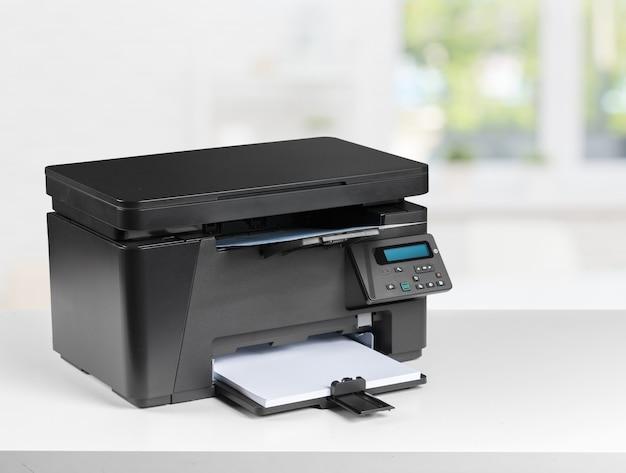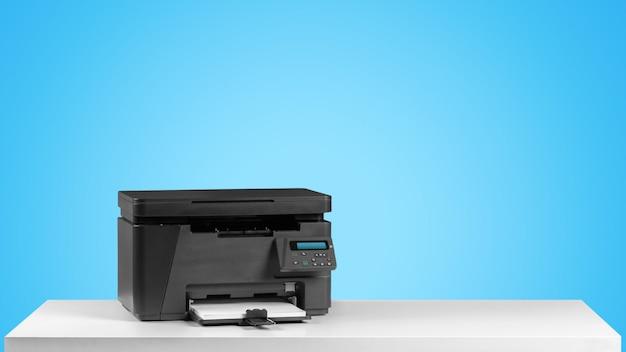In today’s digital age, printers have become an essential device for both personal and professional use. With so many options available in the market, ink tank printers have gained popularity due to their cost-effectiveness and convenience. Ink tank printers, also known as continuous ink supply system (CISS) printers, use refillable ink tanks instead of traditional ink cartridges. While they offer several advantages, it’s important to consider the disadvantages of ink tank printers before making a purchasing decision.
In this blog post, we will explore the various drawbacks of ink tank printers and the potential challenges they pose. We will also compare ink tank printers with other printer types, such as inkjet and laser printers, to help you determine which option is best suited to your needs. So, let’s dive into the world of ink tank printers and uncover the downsides that may affect your printing experience.
Disadvantages of Ink Tank Printers
Overview
Ink tank printers have gained popularity in recent years due to their cost-effective nature and high-quality printing capabilities. However, like any technology, these printers are not without their downsides. In this section, we will explore the disadvantages of ink tank printers and delve into the aspects you should consider before making a purchase decision.
1. High Initial Cost
While ink tank printers excel in terms of long-term cost savings, their initial investment can be quite steep. These printers tend to have a higher price tag compared to traditional inkjet printers. Although the upfront cost may give you pause, it’s crucial to remember that the long-term savings on consumables can outweigh the initial financial outlay.
2. Limited Color Range
Ink tank printers are known for their ability to produce vivid and vibrant colors. However, when it comes to a wide color range, they might fall short compared to their laser counterparts. If you work extensively with highly nuanced color palettes or require precise color accuracy for professional purposes, you might want to consider a printer with a broader color gamut.
3. Print Speeds
While ink tank printers have improved significantly in recent years, they may still lag behind traditional inkjet or laser printers when it comes to print speeds. If you have high-volume printing needs or frequently require quick outputs, you might experience some frustration with the relatively slower printing speed of ink tank printers. However, for most personal or small business users, the speed is adequate for day-to-day printing tasks.
4. Prone to Clogging
Ink tank printers utilize inkjet technology, which is susceptible to clogging if not used regularly. If a printer sits idle for an extended period, ink residue can dry up and clog the print heads, resulting in poor print quality or no print at all. Regular maintenance, such as periodic nozzle checks and print head cleanings, can help mitigate this issue. So, if you’re an occasional printer or tend to use your printer sporadically, you may need to be extra vigilant about maintenance.
5. Print Quality on Specialty Media
While ink tank printers generally deliver excellent print quality on standard office paper, the same cannot always be said for specialty media. If you frequently print on glossy or matte photo paper, fabric transfers, or other non-standard materials, it’s advisable to test the printer’s performance on these media types before committing to a purchase. Achieving optimal print results on specialty media may require adjustments and fine-tuning.
6. Size and Bulkiness
Due to the additional ink tank compartments, ink tank printers are often bulkier and heavier than regular inkjet printers. If you have limited desk space or frequently need to transport your printer, the larger dimensions and weight may pose an inconvenience. It’s essential to consider the physical footprint of the printer and ensure it aligns with your space requirements and portability needs.
7. Dependence on Color Printing
Ink tank printers operate using a combination of color and black ink. This means that even if you primarily print black and white documents, you will still need to maintain a sufficient level of color ink to keep the printer functioning. If you rarely print in color or prefer monochrome printing, the ink consumption of an ink tank printer may not be as cost-effective as anticipated.
Wrapping Up
While ink tank printers offer numerous advantages in terms of long-term cost savings and high-quality prints, it’s crucial to weigh the disadvantages before making a purchasing decision. Consider factors such as your budget, color requirements, printing frequency, print speed expectations, and the specific media you frequently use. By understanding these potential drawbacks and how they align with your needs, you can make an informed choice that ensures a printer that suits your unique requirements and maximizes your overall printing experience.
FAQ: What Are The Disadvantages Of Ink Tank Printer
Welcome to our FAQ section on ink tank printers! Here, we’ll address some of the most frequently asked questions about the disadvantages of ink tank printers. So, let’s dive right in and uncover the answers you’ve been searching for.
What is the cheapest type of printer
When it comes to affordability, ink tank printers take the lead. They offer low-cost printing solutions with their refillable ink tanks, making them a cost-effective option for both home and office use.
What is the advantage and disadvantage of inkjet printer
Inkjet printers have their pros and cons. On the one hand, they produce high-quality prints with vibrant colors and are generally affordable. However, they tend to be slower compared to other printer types, and the costs of ink cartridges can add up over time.
What is the difference between thermal inkjet and inkjet
The main distinction between thermal inkjet and inkjet lies in their printing technology. Thermal inkjet printers use heat to propel ink onto the paper, while traditional inkjet printers use electrically-charged droplets. As a result, thermal inkjet printers are typically faster and produce better-quality prints.
What is the most economical printer for home use
For economical home printing, ink tank printers are hard to beat. With their large-capacity ink tanks and affordable refill bottles, ink tank printers provide a cost-effective solution, significantly reducing printing expenses in the long run.
Which is better, laser or ink tank printer
Both laser printers and ink tank printers have their merits. Laser printers generally offer faster print speeds and are better suited for high-volume printing. On the other hand, ink tank printers excel at producing high-quality color prints and are more cost-effective, especially for homes and small offices.
What is the disadvantage of printer
Printers, in general, can be subject to occasional setbacks. Some common disadvantages include the need for frequent maintenance, the cost of ink or toner cartridges, occasional paper jams, and technical glitches. However, these issues are often manageable with proper care and troubleshooting.
Is the ink tank printer good
Absolutely! Ink tank printers have gained popularity and for good reason. They offer superior print quality, cost-effective printing solutions, and the convenience of refillable ink tanks. Whether for home, school, or business use, ink tank printers are a solid choice.
How do you maintain a printer’s ink tank
Maintaining an ink tank printer is fairly simple. Regularly clean the printhead to avoid clogs, keep an eye on ink levels, and store the printer in a dust-free environment. Following these basic maintenance practices will help ensure optimal performance and longevity for your ink tank printer.
Do ink tank printers dry up
One of the advantages of ink tank printers is their ability to resist drying up. The ink tanks are sealed to prevent evaporation, keeping the ink fresh and ready for use even after periods of inactivity. This eliminates the frustration of dried-up cartridges that may occur with other printer types.
Which is the best all-in-one ink tank printer
When it comes to all-in-one ink tank printers, both Epson and Canon offer excellent options. Epson’s EcoTank and Canon’s MegaTank series are known for their outstanding print quality, versatile features, and cost-effective printing options. Ultimately, the best choice depends on your specific needs and preferences.
Are refillable ink tanks worth it
Refillable ink tanks are definitely worth considering. They provide users with the flexibility to refill their ink tanks as needed, offering significant cost savings compared to traditional ink cartridges. Not only do they help cut down on printing expenses, but they also contribute to a more sustainable printing solution.
What is the benefit of an ink tank printer
Ink tank printers offer several advantages. They provide high-quality prints, cost-effective ink solutions, and longer periods between refills. With their larger ink capacities, you can print more without constantly worrying about running out of ink. Plus, their refillable nature reduces waste and promotes environmental friendliness.
How long does ink last in a tank printer
The ink in an ink tank printer can last for a considerable amount of time. With their larger ink capacities, you can expect the ink to last anywhere from several months to a year, depending on your printing frequency and volume.
How long before printer ink dries up
Printer ink has a shelf life and can dry up over time, especially if not used regularly. However, ink tank printers are designed to minimize this issue with their sealed ink tanks. As long as you use your ink tank printer periodically, you shouldn’t experience problems with dried-up ink.
Which printer type is more economical
In terms of cost-effectiveness, ink tank printers take the crown. Their refillable ink tanks and affordable ink bottles make them a highly economical choice, providing substantial savings on printing expenses compared to other printer types.
Which printer is better, Epson or Canon
In the world of ink tank printers, both Epson and Canon offer excellent choices. Epson printers are renowned for their exceptional print quality and user-friendly interfaces. On the other hand, Canon printers have also established a strong reputation for their reliable performance and rich color reproduction. Ultimately, the decision between Epson and Canon comes down to personal preference and specific needs.
Which is better, an inkjet or an ink tank printer
Both inkjet and ink tank printers have their advantages. Inkjet printers often offer better photo printing quality, while ink tank printers provide high-quality prints at a lower cost per page. It ultimately depends on your printing needs and budget. It’s worth considering an ink tank printer if you print frequently, as the cost savings on ink can be significant.
What are the disadvantages of inkjet printers
While inkjet printers have many strengths, they also have a few disadvantages. Inkjet printers tend to have higher ink costs compared to other printer types, and their print speeds can be slower. Additionally, the printouts from inkjet printers may smudge if they come into contact with moisture.
Which printer is best for home use
For home use, ink tank printers are an excellent choice. Their combination of high-quality prints, cost-effective printing, and versatility make them ideal for a range of printing needs. Whether you’re printing school assignments, family photos, or creative projects, an ink tank printer is sure to meet your expectations.
Which printers are most economical on ink
When it comes to economical printing, ink tank printers are among the top contenders. With their large-capacity ink tanks and affordable refill bottles, they offer significant savings on ink costs, making them a wise investment for those looking to minimize their printing expenses.
That concludes our FAQs on the disadvantages of ink tank printers. We hope we’ve addressed your concerns and provided you with valuable insights. If you have any further questions, feel free to reach out. Happy printing!
Disclaimer: The information provided in this article is based on general knowledge and may vary depending on specific printer models and manufacturer recommendations.

